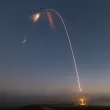Featured Image: Austin DeSisto/Everyday Astronaut
Lift Off Time | August 26, 2023 – 07:27:00 UTC | 03:27:00 EDT |
|---|---|
Mission Name | Crew-7, or United States Crew Vehicle mission 7 (USCV-7) |
Launch Provider | SpaceX |
Customer | National Aeronautics and Space Administration (NASA) |
Rocket | Falcon 9 Block 5, Booster B1081-1 |
Launch Location | Launch Complex 39A (LC-39A), Kennedy Space Center, Florida, USA |
Payload mass | Not specified |
Where is the spacecraft going? | Crew Dragon will rendezvous with the International Space Station (ISS) in an orbit of around 400 km. |
Will they be attempting to recover the first stage? | Yes |
Where will the first stage land? | Landing Zone 1 |
How’s the weather looking? | The weather is currently 95% go for launch (as of August 26, 2023 – 1:28 UTC). |
This will be the: | –250th Falcon 9 launch – 220th booster landing – 146th consecutive booster landing (a record) – 11th SpaceX crewed mission – 68th SpaceX launch from LC-39A – 7th CCtCap (Commercial Crew Transportation Capability) mission – 3rd flight of Crew Dragon C210 “Endurance” – 5th flight of a new Falcon 9 booster to launch humans – 60th launch for SpaceX in 2023 – 132nd orbital launch attempt of 2023 |
Where to watch | Official livestream |
What Does All This Mean?
For the seventh time, SpaceX will launch astronauts to the International Space Station (ISS) in the Crew Dragon spacecraft atop a Falcon 9 rocket for the Commercial Crew Program. The rocket is set to lift off from Launch Complex 39A (LC-39A), Kennedy Space Center, Florida, USA. Crew-7 will be the third flight of the Crew Dragon Endurance spacecraft.
SpaceX’s crewed flight personnel has ranged from commercial astronauts to private citizens. As of Crew-7, SpaceX will have launched eleven missions with humans onboard. These include the seven commercial crew program missions, Demonstration Mission-2, Inspiration 4, and both Axiom 1 and Axiom 2, which visited the ISS. The total number of humans launched by SpaceX, upon the successful completion of Crew-7, totals 42 – the answer to everything!
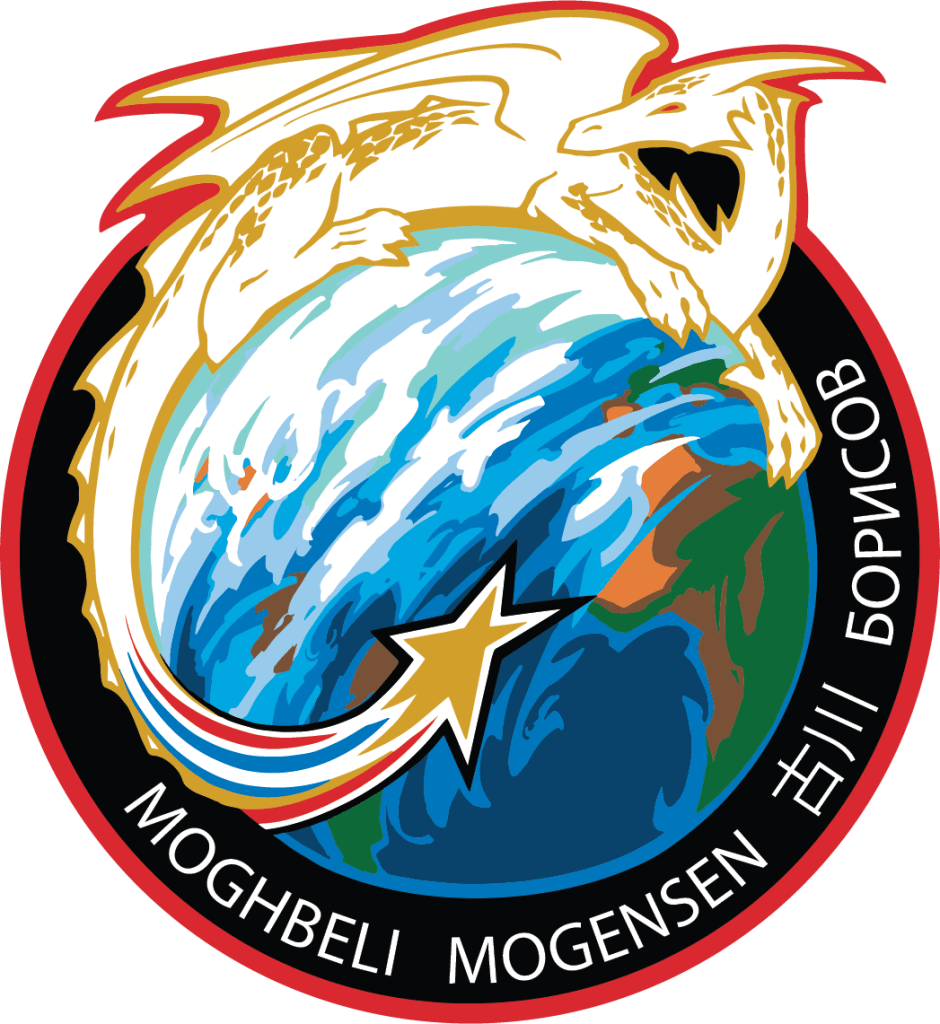
Crew-7 (USCV-7)
Crew-7 is the seventh regular crew rotation mission to the ISS to launch atop a SpaceX Falcon 9 rocket. Crew Dragon Endurance will carry four astronauts to the station where they will stay for six months. In the fall of 2023, the Crew-6 astronauts currently aboard the ISS — Stephen Bowen, Warren Hoburg, Sultan Al Neyadi, and Andrey Fedyaev — will depart and return to Earth. Crew-7 will join the MS-22 cosmonauts Sergey Prokopyev, Dmitry Petelin, and astronaut Francisco Rubio, bringing the total crew members aboard to the station to 11.

Meet The Crew
Flying on Crew Dragon Endurance will be one NASA astronaut, one ESA astronaut, one JAXA astronaut, and one ROSCOSMOS cosmonaut. Crew-7, with its four astronauts/cosmonauts from four different countries and four different space agencies is a prime example of international collaboration and arguably one of the most international missions there has ever been.
- Commander: NASA astronaut Jasmin Moghbeli
- Pilot: ESA astronaut Andreas Enevold Mogensen
- Mission Specialist: ROSCOSMOS cosmonaut Konstantin Sergeyevich Borisov (Константин Сергеевич Борисов)
- Mission Specialist: JAXA astronaut Satoshi Furukawa (古川 聡)
Crew-7 Commander Jasmin Moghbeli
Commander Jasmin Moghbeli was born on June 24, 1983, in Bad Nauheim, Germany. Her parents, Fereshteh and Kamy Moghbeli, are originally from Teheran, Iran, but fled the country in 1979 and subsequently emigrated to the United States. They settled in Baldwin, New York, which Moghbeli considers her home.
Moghbeli graduated from MIT with a bachelor’s degree in aerospace engineering and was commissioned as an officer in the United States Marine Corps. As an AH-1 Super Cobra pilot, she was deployed overseas three times and flew 150 combat missions. Later, Moghbeli graduated from U.S. Naval Postgraduate School in California with a master’s degree in aerospace engineering. After acquiring her master’s degree, she became a helicopter test pilot at Marine Corps Air Station Yuma, Arizona.
Jasmin Moghbeli was selected as a member of NASA Astronaut Group 22 in June 2017 and began her two-year training shortly after. In January 2020, Moghbeli graduated together with 13 of her colleagues and was assigned as Commander for Crew-7 in March of 2022.


Crew-7 Pilot Andreas Mogensen
Born on November 2, 1976 in Copenhagen, Denmark, Pilot Andreas Mogensen received a master’s degree in aeronautical engineering from Imperial College London in the UK in 1999.
After graduating, Mogensen gathered work experience as an engineer all around the world. As a drilling services engineer, he worked on offshore oil rigs in the Republic of Congo and the Republic of Angola. Later on, he designed control systems for wind turbines in Denmark, before working on his doctorate at the Center for Space Research at the University of Texas in Austin.
In 2009, Mogensen was chosen as an ESA astronaut while he was involved in spacecraft guidance, navigation, and control for entry, descent, and landing in lunar missions at the Surrey Space Center, located at the University of Surrey in the UK.
Crew-7 will be Mogensen’s second trip to the ISS and it will be the first time a non US citizen will be the Pilot of a US spacecraft. Soyuz TMA-18M in 2015 did not only mark his first trip to space, but Mogensen also became the first Danish citizen to go to space.
Crew-7 Mission Specialist Konstantin Sergeyevich Borisov (Константин Сергеевич Борисов)
Mission Specialist Konstantin Sergeyevich Borisov was born on August 14, 1984 in Smolensk.
On June 27, 2005, Borisov graduated with a bachelor’s degree in Economics from the Russian Academy of Economics, after which he pursued a master’s degree in Operations Research and Systems Analysis at Warwick University, Coventry, UK in 2007.
In 2018, Borisov obtained the qualification “Master” in Aircraft Building after completing the masters program Life Support Systems for Aircraft at the Moscow Aviation Institute.
Later that same year, Borisov was selected as a cosmonaut, beginning his cosmonaut training shortly after. In 2020, he finished his training and was assigned to Crew-7 in March of 2023.


Crew-7 Mission Specialist Satoshi Furukawa (古川 聡)
Born on April 4, 1964 in Kanagawa, Mission Specialist Satoshi Furukawa graduated from High School in Kamakura in 1983.
Furukawa studied Medicine at the University of Tokyo, where he graduated with a Doctor of Medicine in 1989, as well as with a PhD in Medical Science in 2000.
Before he was selected as an astronaut candidate in 1999, Furukawa worked as an anesthetist and surgeon Ibaraki Prefectural Central Hospital and at Sakuragaoka Hospital. Furukawa finished his astronaut training in 2001.
Soyuz TMA-02M was Furukawa’s first trip to space back in 2001, with Crew-7 marking his second flight, as well as his second long duration mission to the ISS.
What Is Falcon 9 Block 5?
The Falcon 9 Block 5 is SpaceX’s partially reusable two-stage medium-lift launch vehicle. The vehicle consists of a reusable first stage, an expendable second stage, and, when in payload configuration, a pair of reusable fairing halves.
First Stage
The Falcon 9 first stage contains nine Merlin 1D+ sea-level engines. Each engine uses an open gas generator cycle and runs on RP-1 and liquid oxygen (LOx). Each engine produces 845 kN of thrust at sea level, with a specific impulse (ISP) of 285 seconds, and 934 kN in a vacuum with an ISP of 313 seconds. Due to the powerful nature of the engine, and the large amount of them, the Falcon 9 first stage is able to lose an engine right off the pad, or up to two later in flight, and be able to successfully place the payload into orbit.
The Merlin engines are ignited by triethylaluminum and triethylborane (TEA-TEB), which instantaneously burst into flames when mixed in the presence of oxygen. During static fire and launch the TEA-TEB is provided by the ground service equipment. However, as the Falcon 9 first stage is able to propulsively land, three of the Merlin engines (E1, E5, and E9) contain TEA-TEB canisters to relight for the boost back, reentry, and landing burns.
Second Stage
The Falcon 9 second stage is the only expendable part of the Falcon 9. It contains a singular MVacD engine that produces 992 kN of thrust and an ISP of 348 seconds. The second stage is capable of doing several burns, allowing the Falcon 9 to put payloads in several different orbits.
For missions with many burns and/or long coasts between burns, the second stage is able to be equipped with a mission extension package. When the second stage has this package it has a grey strip, which helps keep the RP-1 warm, an increased number of composite-overwrapped pressure vessels (COPVs) for pressurization control, and additional TEA-TEB.
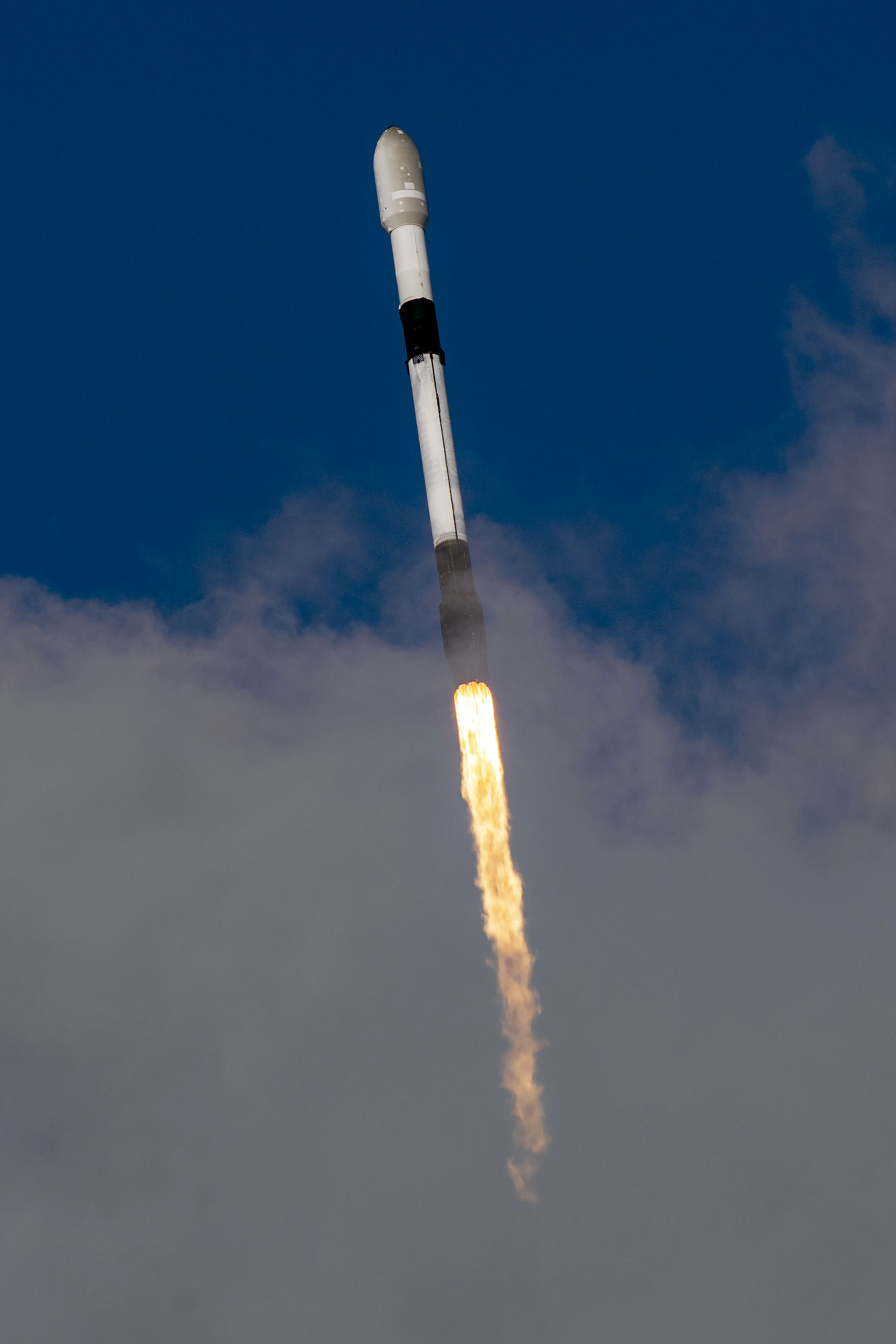
Falcon 9 Booster
The booster supporting the Crew-7 mission is B1081-1. As the name implies, the booster has supported zero previous missions, making Crew-7 the very first. This is the fifth time an unused Falcon 9 booster will launch humans.
Following stage separation, the Falcon 9 will conduct three burns. These burns will softly touch down the booster at SpaceX’s Landing Zone 1.
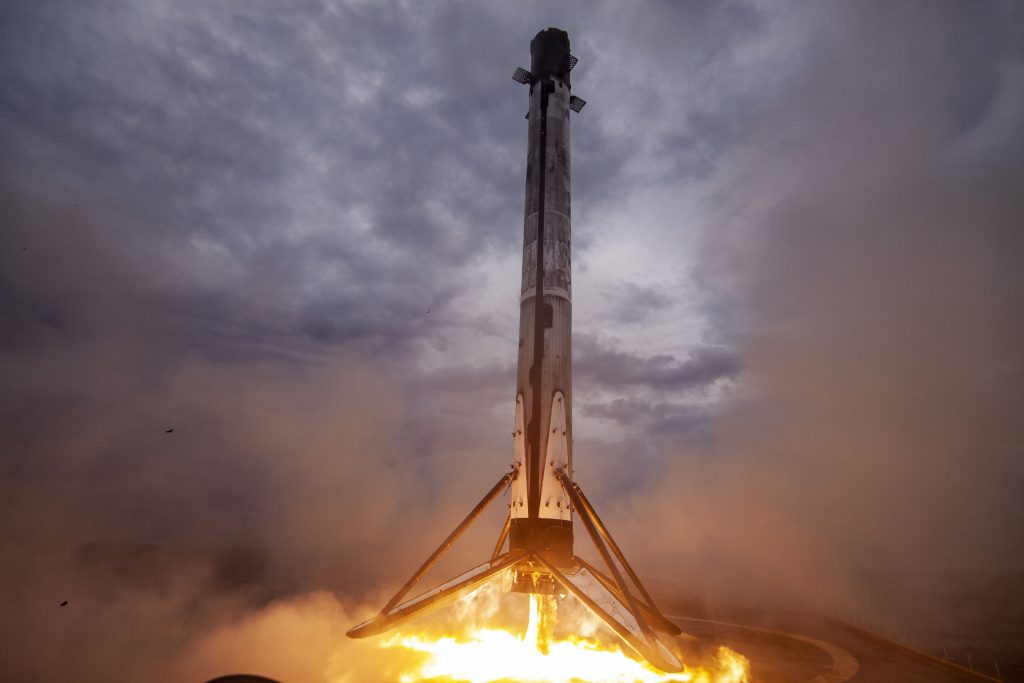
Crew Dragon
The Crew-7 mission will be the third mission to the ISS for Crew Dragon Endurance C210-3. Like its fellow Dragons it will return to Earth after serving its time on the ISS bringing back experiments and other cargo. It will then be refurbished and used on another mission in the future. The capsule was given the name in honor of the SpaceX and NASA teams who built the spacecraft and trained its astronauts in the face of a pandemic, and is also an homage to the ship used in Sir Ernest Shackleton’s Imperial Trans-Antarctic Expedition.
| C208’s missions | Launch Date (UTC) | Turnaround Time (Days) |
|---|---|---|
| Crew-3 | November 11, 2021 | N/A |
| Crew-5 | October 05, 2022 | 329 |
| Crew-7 | August 25, 2023 | 324 |
Crew Dragon is 8.1 m (26.6 ft in) in height and 3.7 meters (12 feet) in diameter. Similar to Cargo Dragon 2, the Crew Dragon spacecraft can and will automatically dock on the ISS with the astronauts inside monitoring the approach and intervening if necessary.
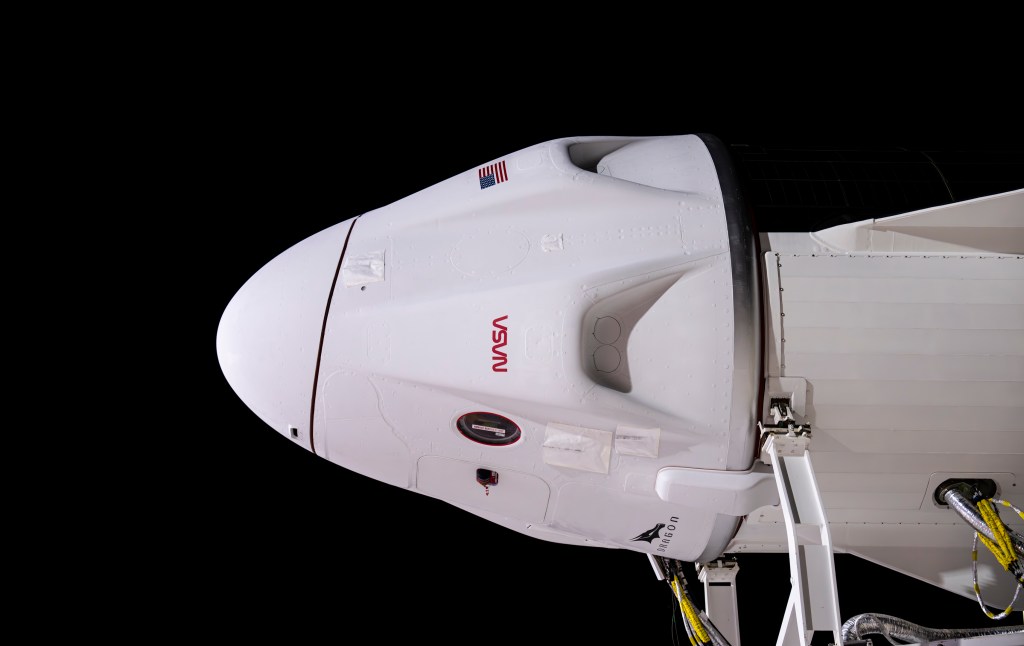


The Crew Dragon shares a similar design with the Cargo Dragon 2 spacecraft intended to carry cargo and experiments to the ISS and back to Earth. However, there are some differences. The Cargo Dragon 2 does not have SuperDraco abort engines, nor a sophisticated life support system since there will be no human passengers on board. The ability to abort at any point during launch is reserved to Crew Dragon. In the pressurized section, the seats and crew displays in Cargo Dragon 2 have been swapped for cargo racks. The environmental control system has also been reduced, both in size and complexity, with those systems being more capable on Crew Dragon.
Crew-7 Countdown
| HR/MIN/SEC | EVENT |
|---|---|
| 00:45:00 | SpaceX Launch Director verifies go for propellant load |
| 00:42:00 | Crew access arm retracts |
| 00:37:00 | Dragon’s launch escape system is armed |
| 00:35:00 | RP-1 (rocket grade kerosene) loading begins |
| 00:35:00 | 1st stage LOX (liquid oxygen) loading begins |
| 00:16:00 | 2nd stage LOX loading begins |
| 00:07:00 | Falcon 9 begins engine chill prior to launch |
| 00:05:00 | Dragon transitions to internal power |
| 00:01:00 | Command flight computer to begin final prelaunch checks |
| 00:01:00 | Propellant tank pressurization to flight pressure begins |
| 00:00:45 | SpaceX Launch Director verifies go for launch |
| 00:00:03 | Engine controller commands engine ignition sequence to start |
| 00:00:00 | Falcon 9 liftoff |
Crew-7 Launch, Landing, and Dragon Separation
All Times Approximate
| HR/MIN/SEC | EVENT |
|---|---|
| 00:01:02 | Max Q (moment of peak mechanical stress on the rocket) |
| 00:02:34 | 1st stage main engine cutoff (MECO) |
| 00:02:38 | 1st and 2nd stages separate |
| 00:02:45 | 2nd stage engine starts |
| 00:07:22 | 1st stage entry burn |
| 00:08:47 | 2nd stage engine cutoff (SECO-1) |
| 00:08:59 | 1st stage landing burn |
| 00:09:26 | 1st stage landing |
| 00:11:57 | Dragon separates from 2nd stage |
| 00:12:45 | Dragon nosecone open sequence begins |



